Digital Asset Research uses detailed time range, price range and other information to show the high probability of major events or news from August 6 to 12. The article also compares the current market cycle with previous cycles, points out the time patterns of market trend changes, and provides sufficient evidence combined with monthly and weekly chart analysis.
This is something I have been discussing publicly for some time, but today I would like to reconfirm that the evidence suggests that there may be a very significant trend and sentiment change in BTC and the broader cryptocurrency market between August 6th and 12th.
I first mentioned this time period a few months ago in my film preview, which you can find here .
Today I will present all the evidence that I build step by step based on time frame, price range and time perspective. I think you'll see a high probability of significant events or news happening within this time window.
We'll start with the monthly chart and work our way up to the daily chart to show the confluence of multiple factors we're seeing.
The monthly chart was what we focused on last week, but to further prove that we're in the same cycle, we've also included months with previous tops. As you can see, the previous two cycles are almost identical to the current one. Thirty-three months from the major high and 20 months from the major low both put us in the period from July to September, the last low before the big move higher.
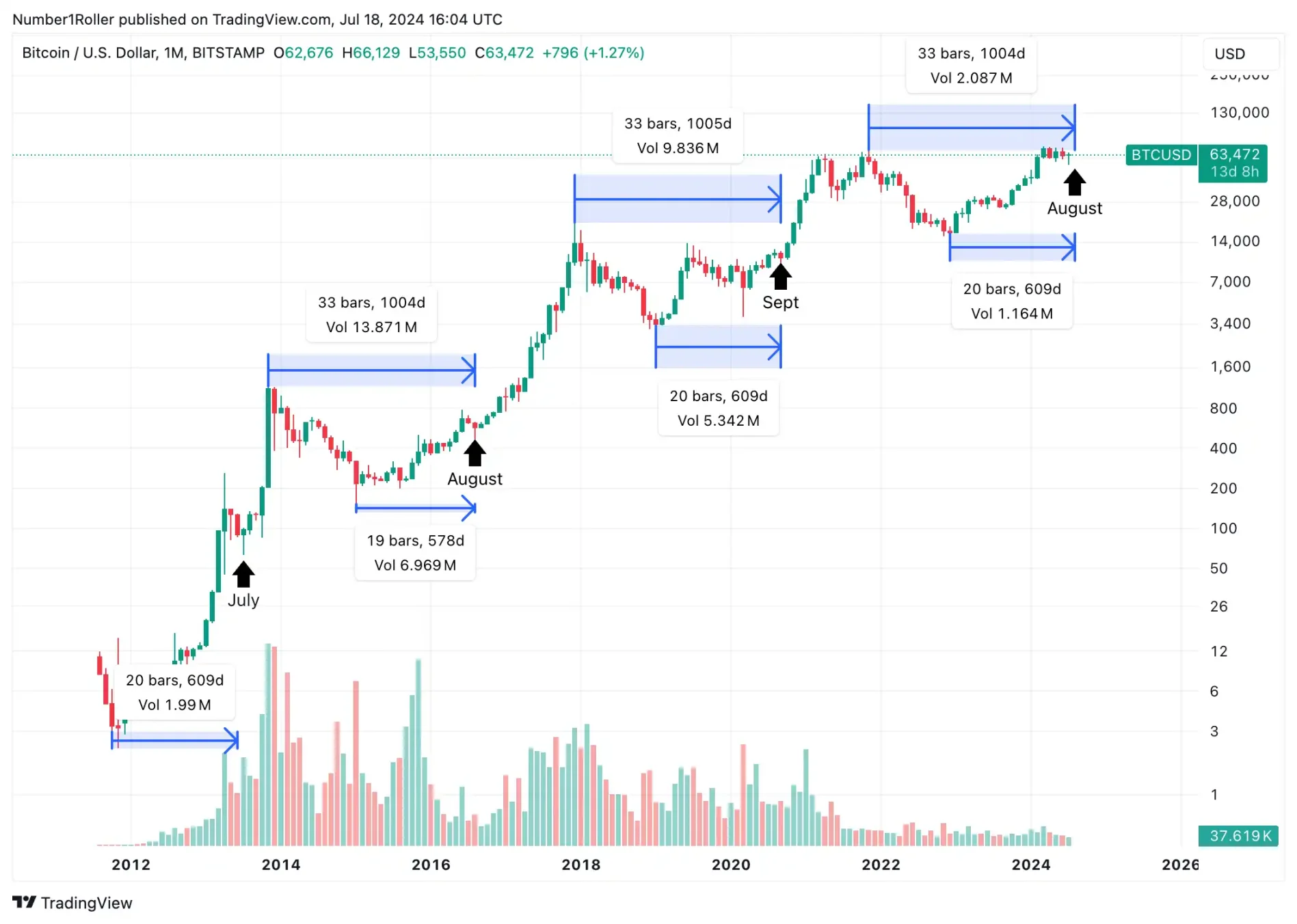
Now we know time is on our side, but many believe this cycle is different as prices quickly reach all-time highs. But let’s compare the current cycle with previous cycles on a monthly chart.
The evidence is quite shocking. As you can see, prices have risen just over 200% from the bear market lows in the previous two cycles, with the exception of 2012, which is exactly the period we are in now. As you can see, this time it's not any different. In reality, time and price are exactly where they should be, neither overstretched nor over-extended as those commentators suggested.
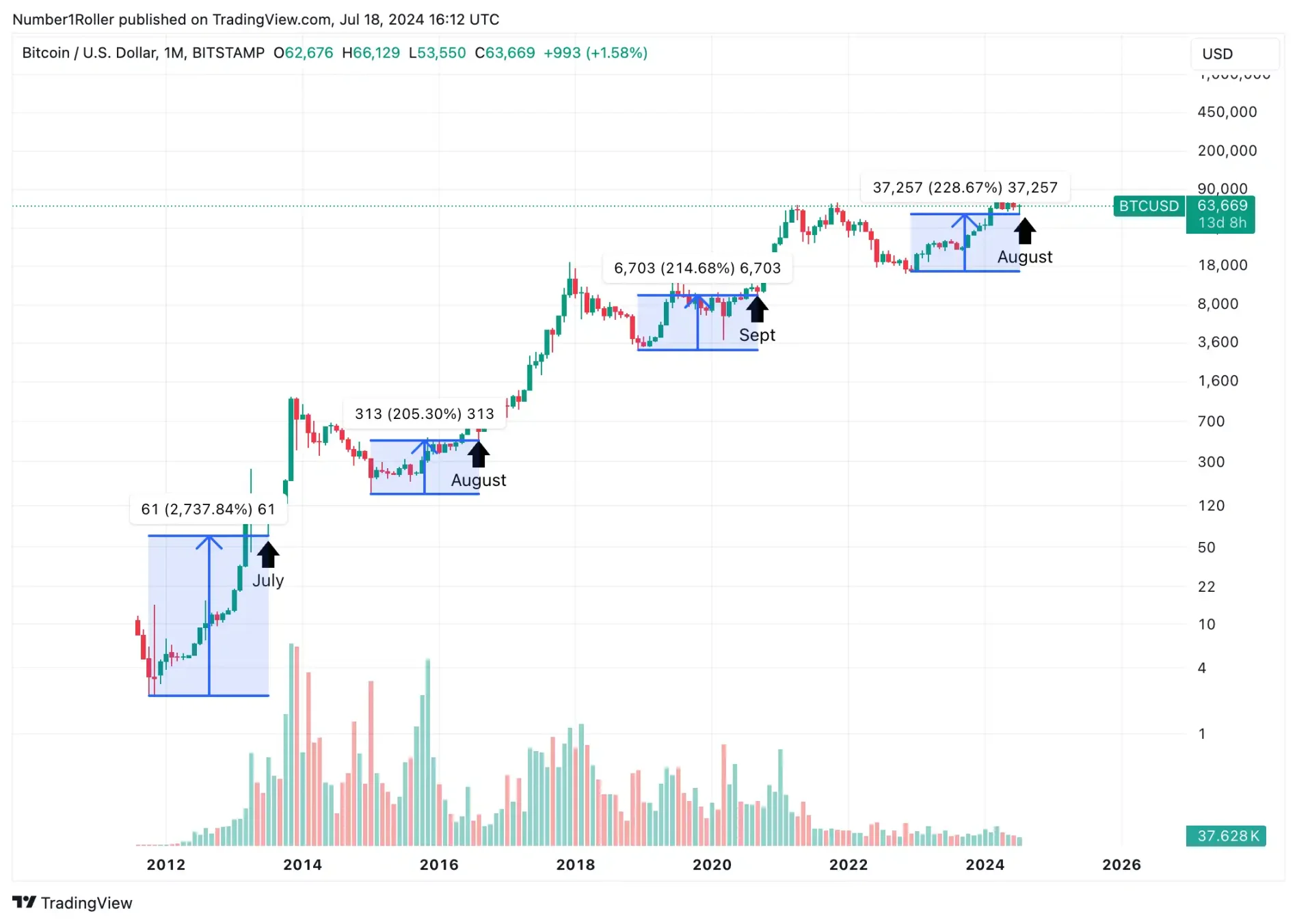
Next we look at the weekly chart and there is more to discuss. First, we find that there is a major trend change every 30 weeks in this cycle. But what's interesting is that this 30-week cycle happens to be between a major low and a major high, all at the same time.
I'll explain why in the next few charts, but for now, the next 30-week period happens to be the week of August 12th. Added together, these three 30-week periods amount to a total of 90 weeks from the bear market low.
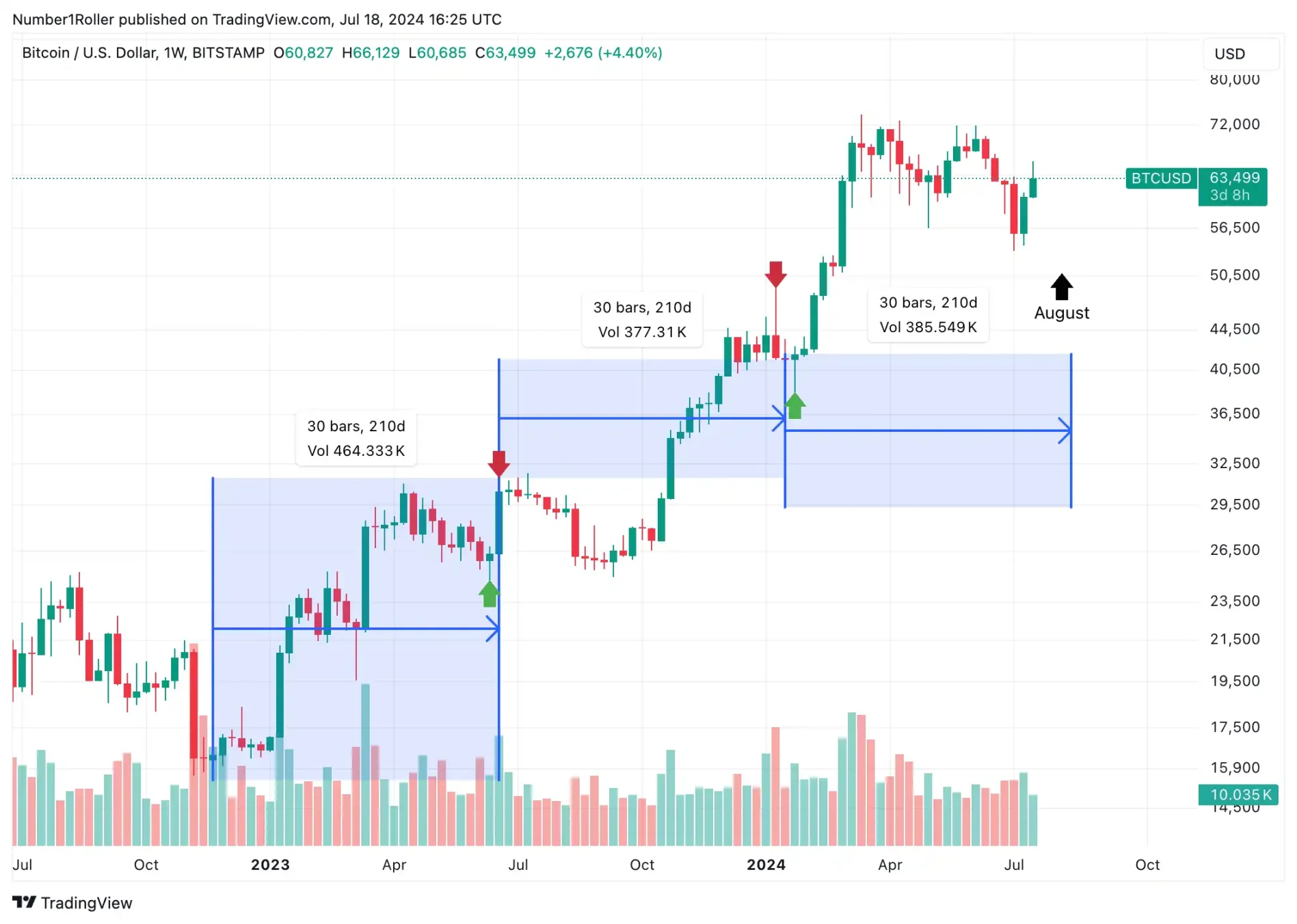
Also, zoom in a little more on the weekly chart. I note that the period from the 2017 high to the first significant high in 2021 is week 174. August 12th will mark 174 weeks from that significant high in April 2021, which was undoubtedly a significant high. Therefore, we are approaching the same time period between two important inflection points, the 2017 high and the April 2021 high.
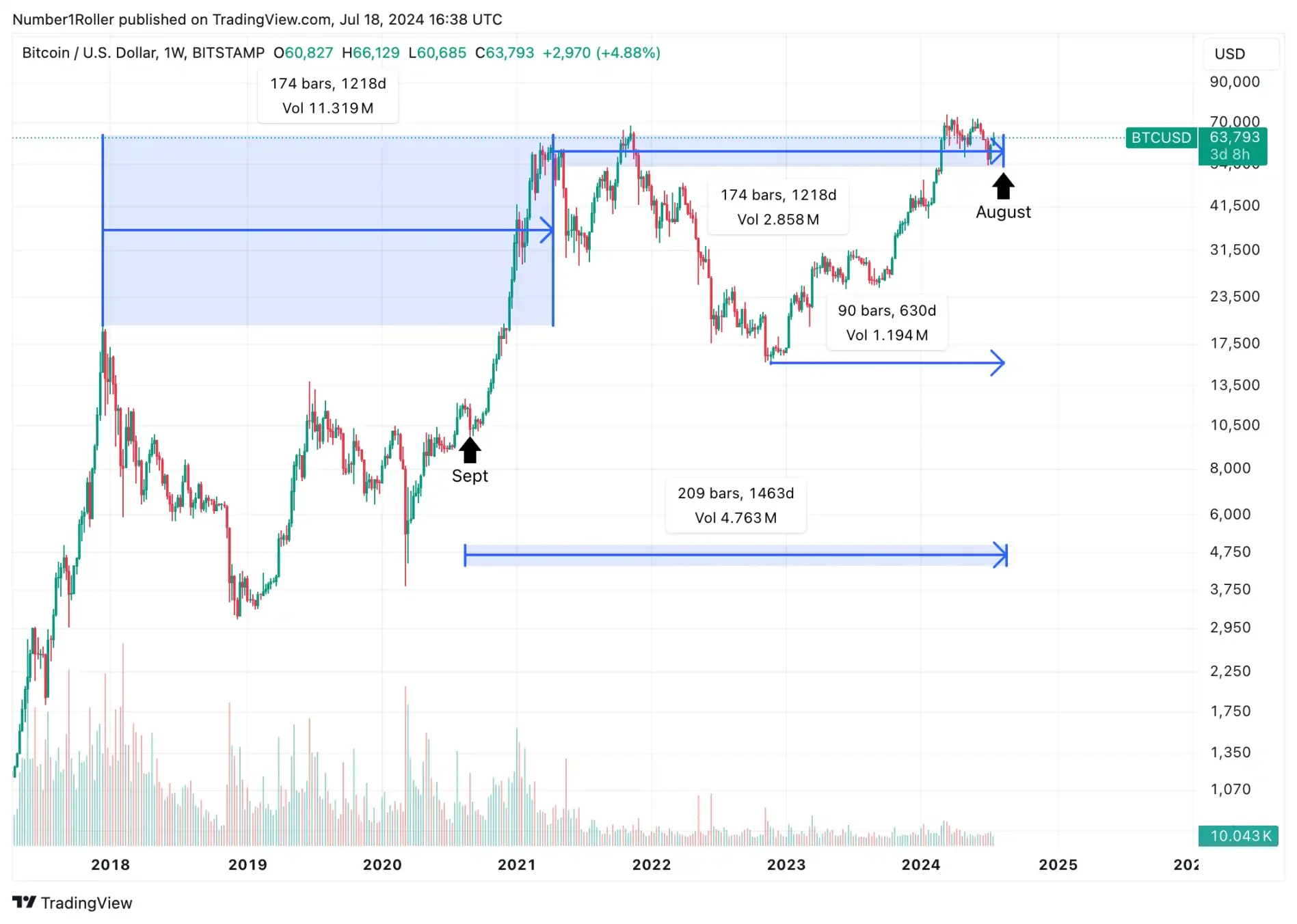
Now, based on our evidence, this market is in a different phase, and it seems to me that the inflection point is more likely to come in the form of a major low rather than a major high. But as I've been saying, in these cycles we tend to see a major high and low in this time window at the same time.
The chart below shows this specific period in each cycle, and what the current cycle looked like at this time last year. As you can see, there is almost always a sharp rise in August, followed by a rapid decline that can reach 20-50%. Last year is different from the other three charts because it is only in the second year of the cycle, but it illustrates the seasonal nature of this type of move occurring in August.

It also shows that during this cycle, the market made significant highs and lows around the 30-week inflection point, with a relatively tight time window.
Now let's look at it from a time perspective. Simply put, time perspective means counting 30 calendar days from a significant high or low and looking for a change in trend. You just start at 30, add up to 30, 60, 90, 120, 150, 180, etc. and look for trend changes at these points in time. The more concentrated the time point, the more important that day or week is.
As the diagram below shows, all of these time measurements fall within a time perspective window. During this cycle, we have several major highs and lows that point to the second week of August as a major convergence period.
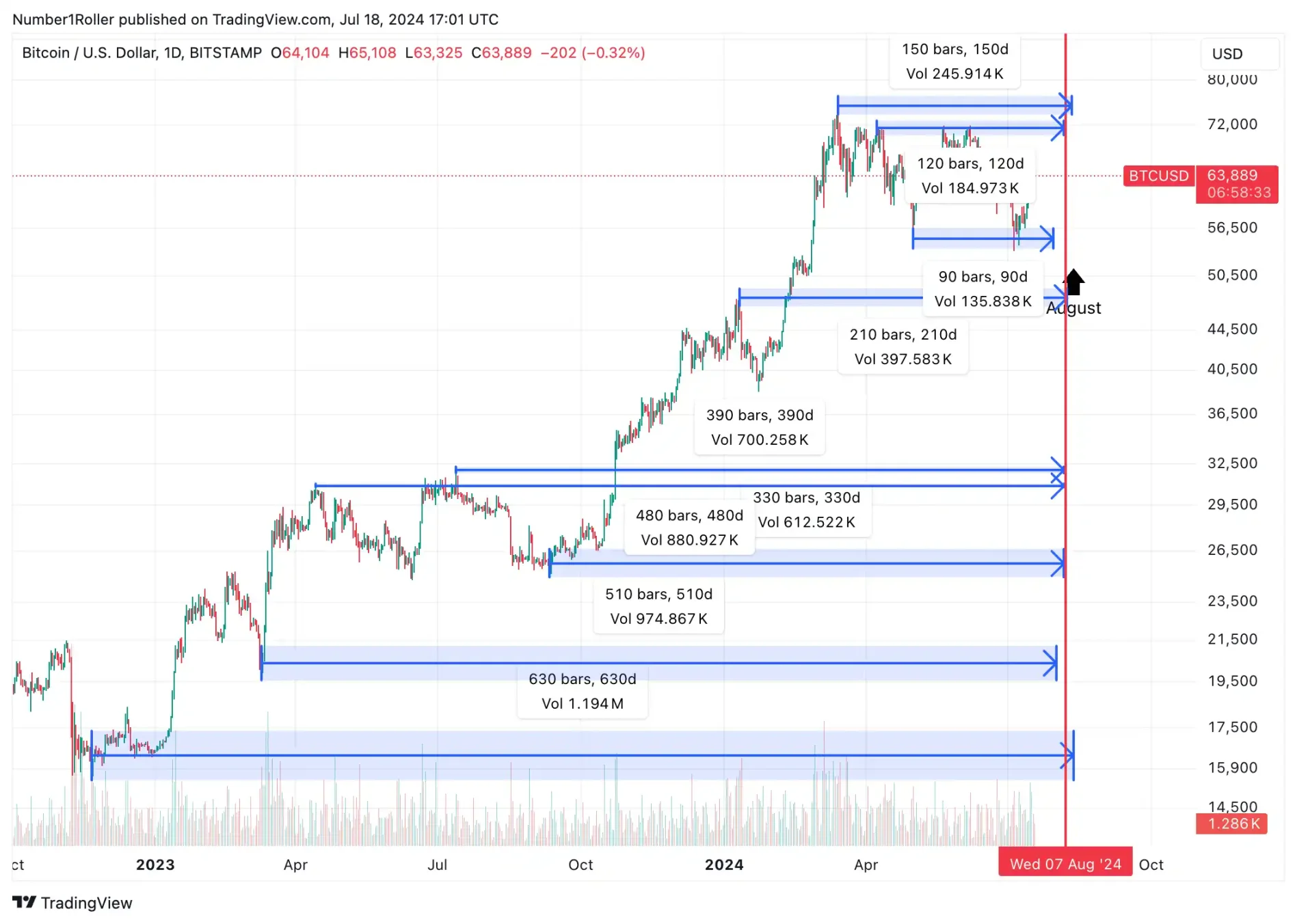
Finally, from a time frame perspective, the market has been following a 150-day pattern during this cycle: 155 days up and 150 days down. It is important to note that the balance of market time should not be out of balance. That is, the market should not have more down days than up days. In a bull market, the market typically rises longer than it falls, as the chart below illustrates. If the market drops for more than the previous 150 days and new lows are reached, this would not be a good sign.
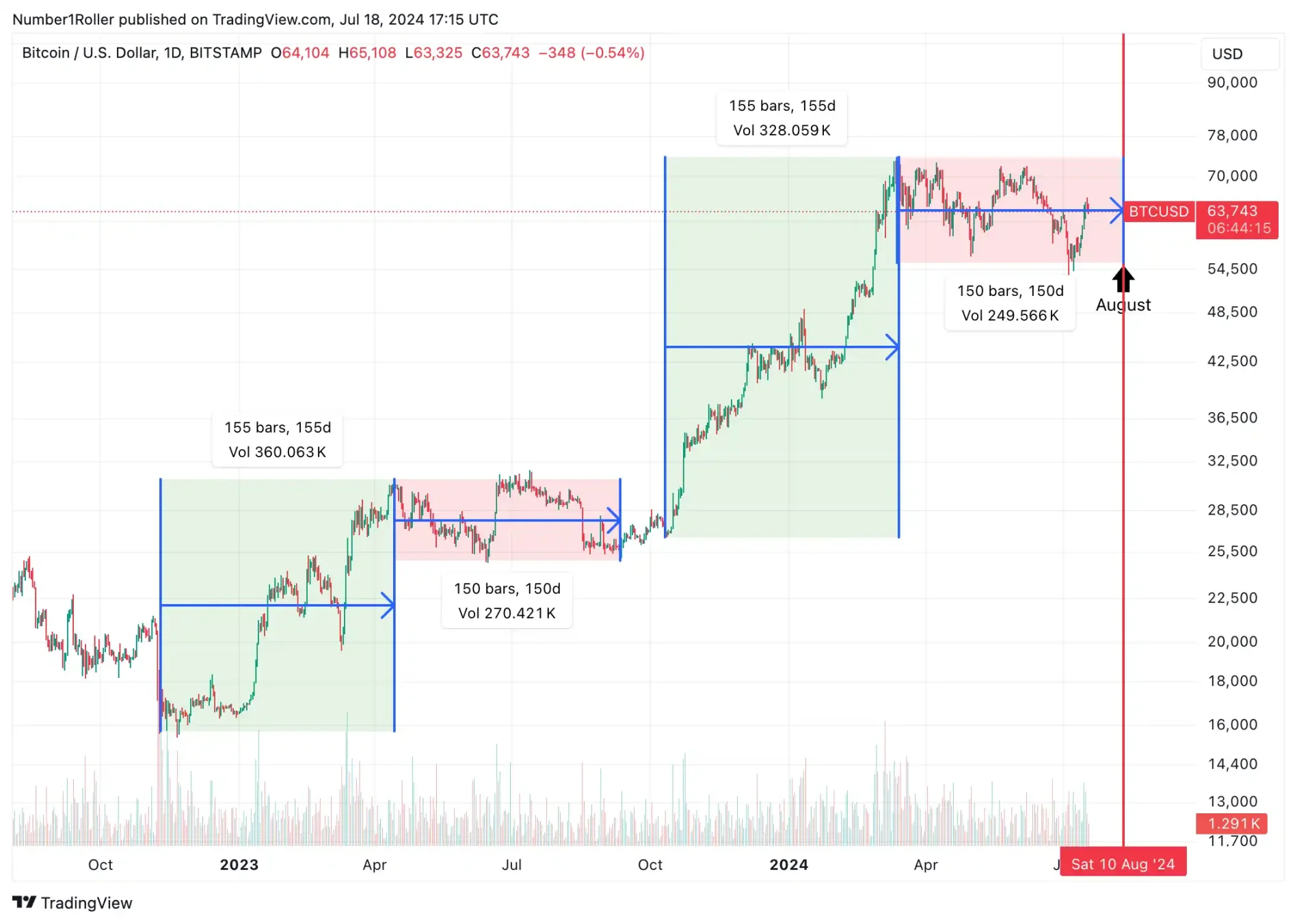
Finally, taking into account price range, time frame, time perspective, and seasonality, we are approaching a mid-August window that may very well be a trigger point for BTC. If this evidence isn't enough, note that the starting date on the BTC chart is August 19th. I won't go into this too much, but date of birth is important, and August is typically the month when major bull markets begin.
That's why I'm being cautious here and waiting for this window to end before taking more aggressive action. Will we see the ETH ETF finally start trading, followed by a rapid decline like the BTC ETF?
Or will we see more political headlines fueling election uncertainty? I'm not entirely sure what it will be, but it's definitely a time to watch and be patient.








